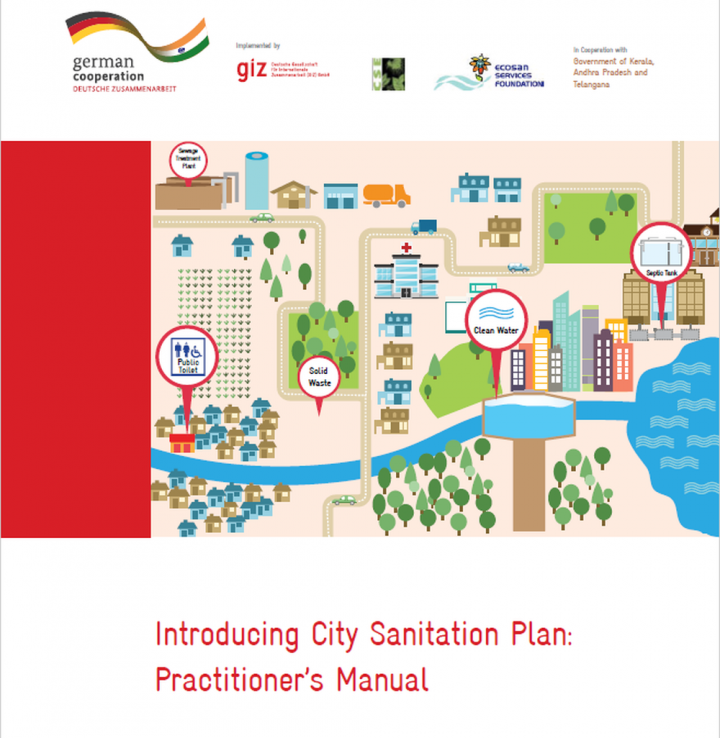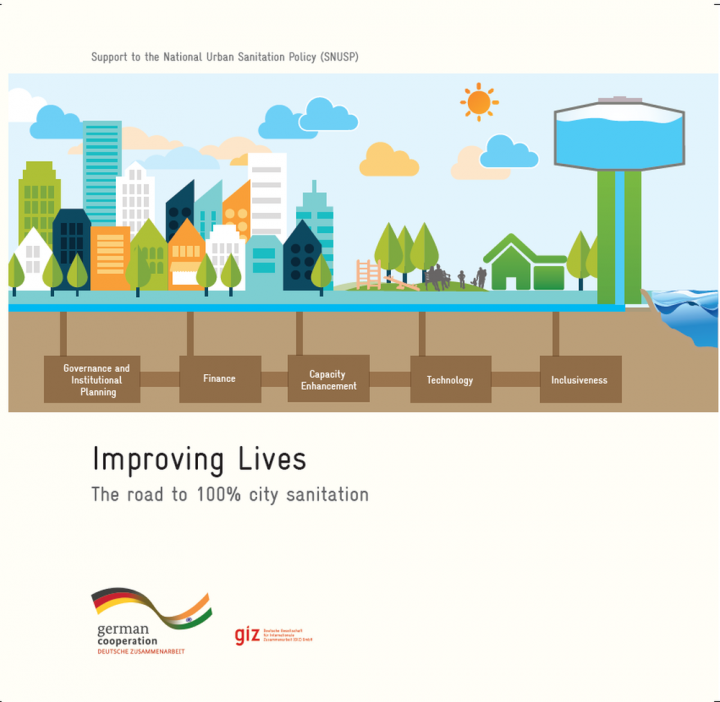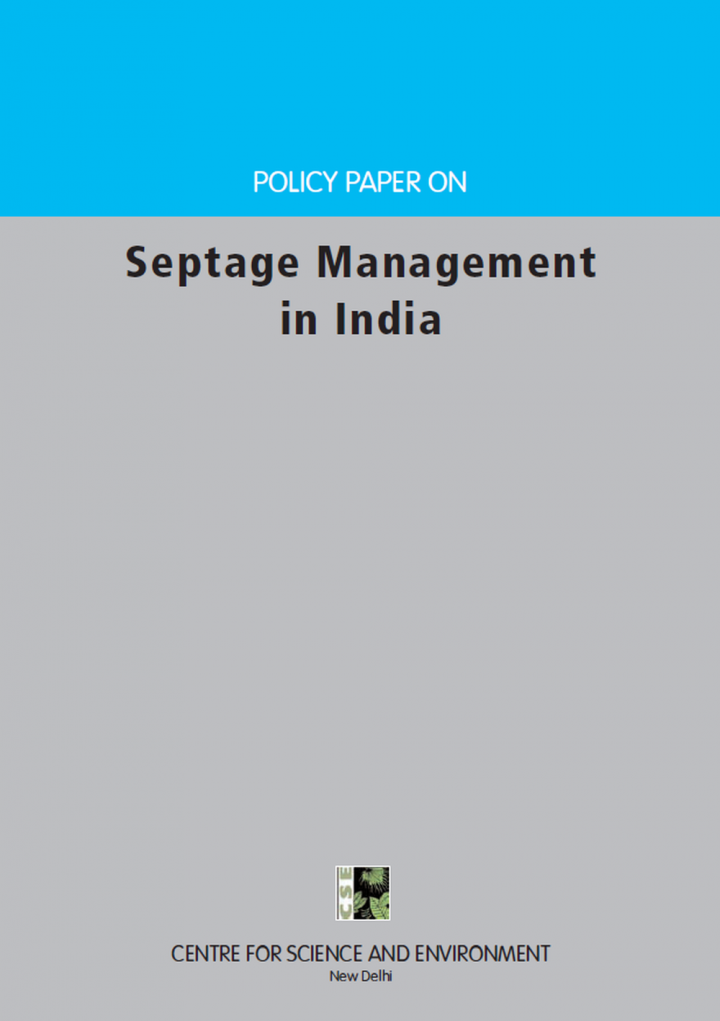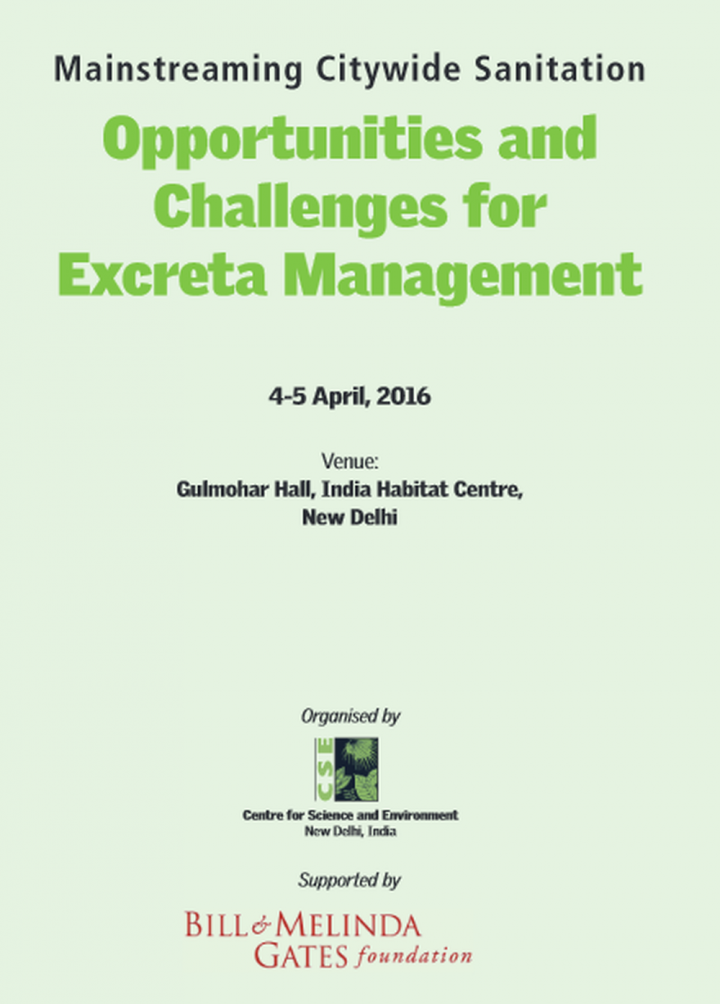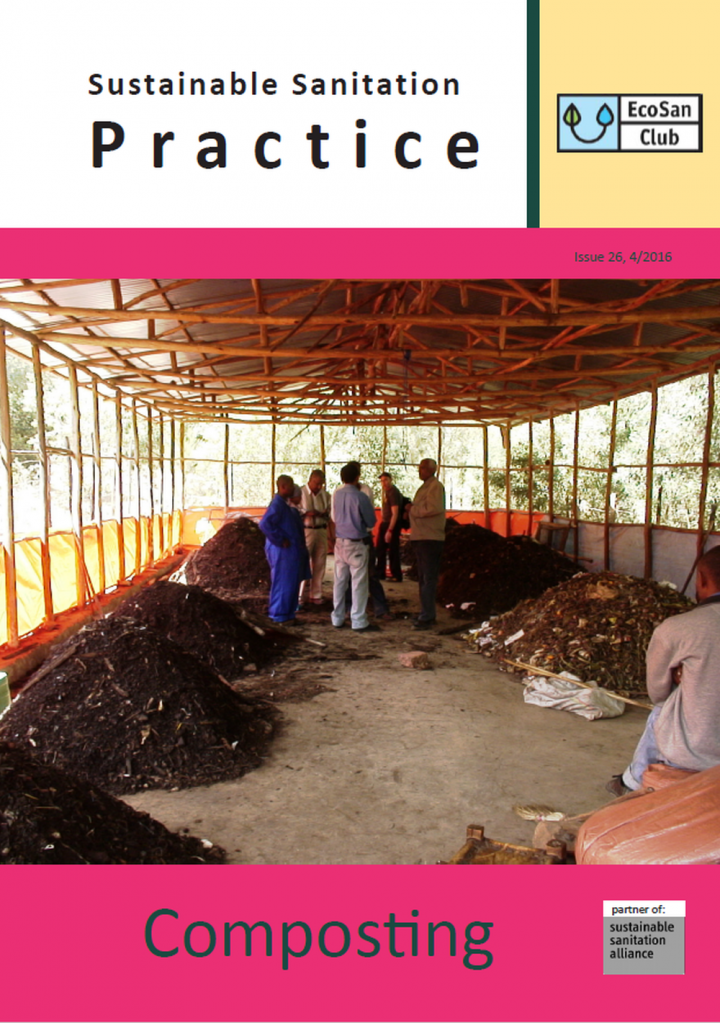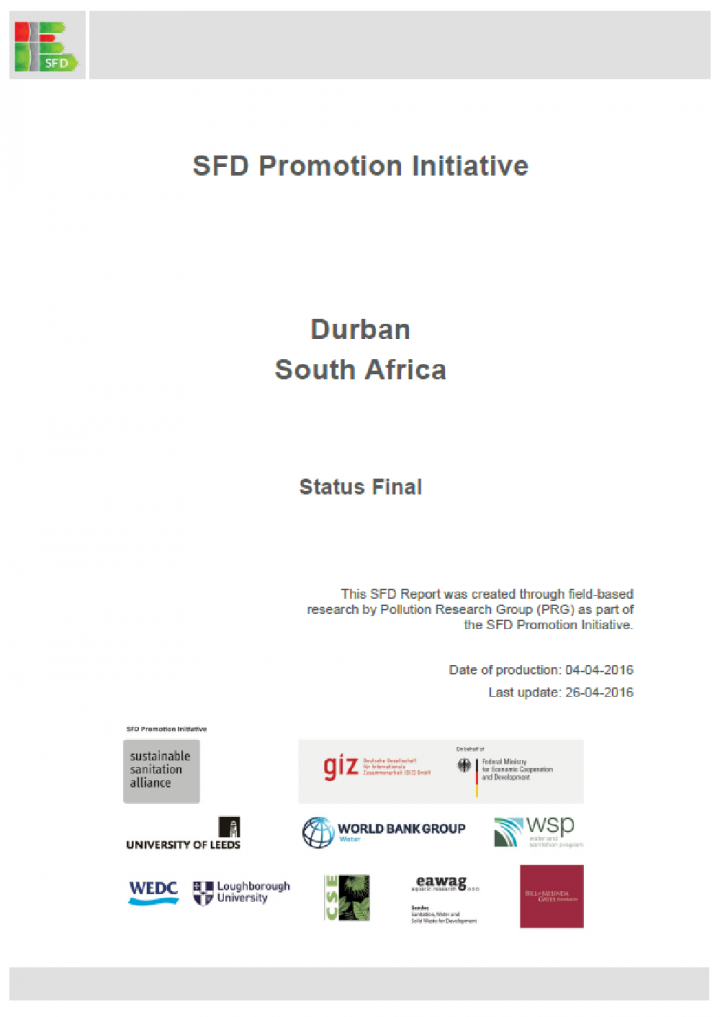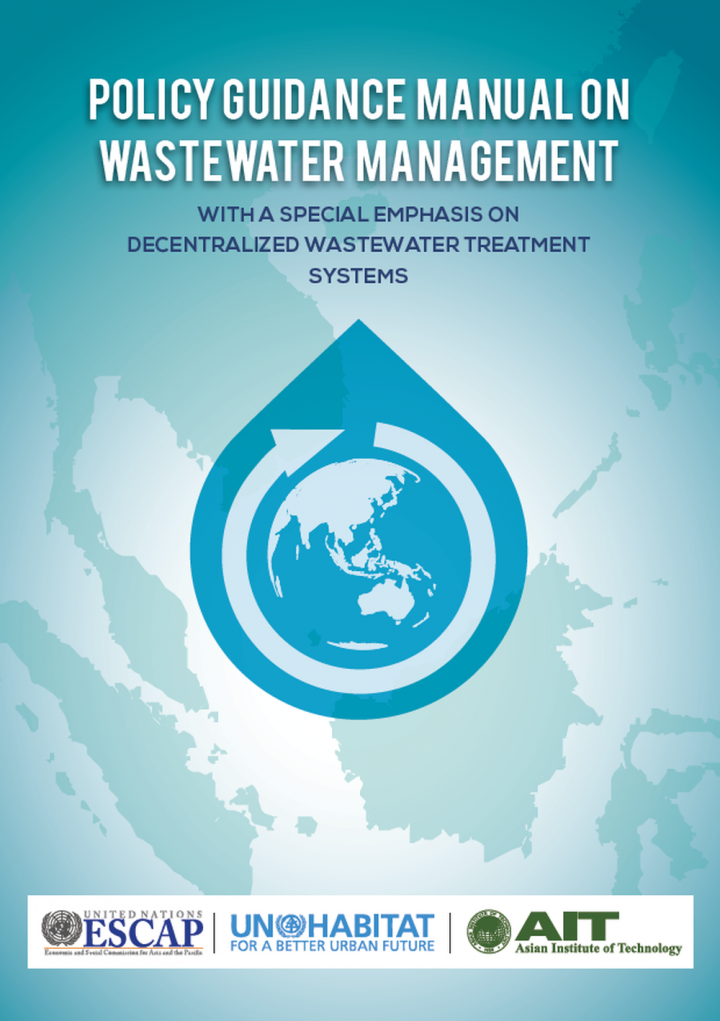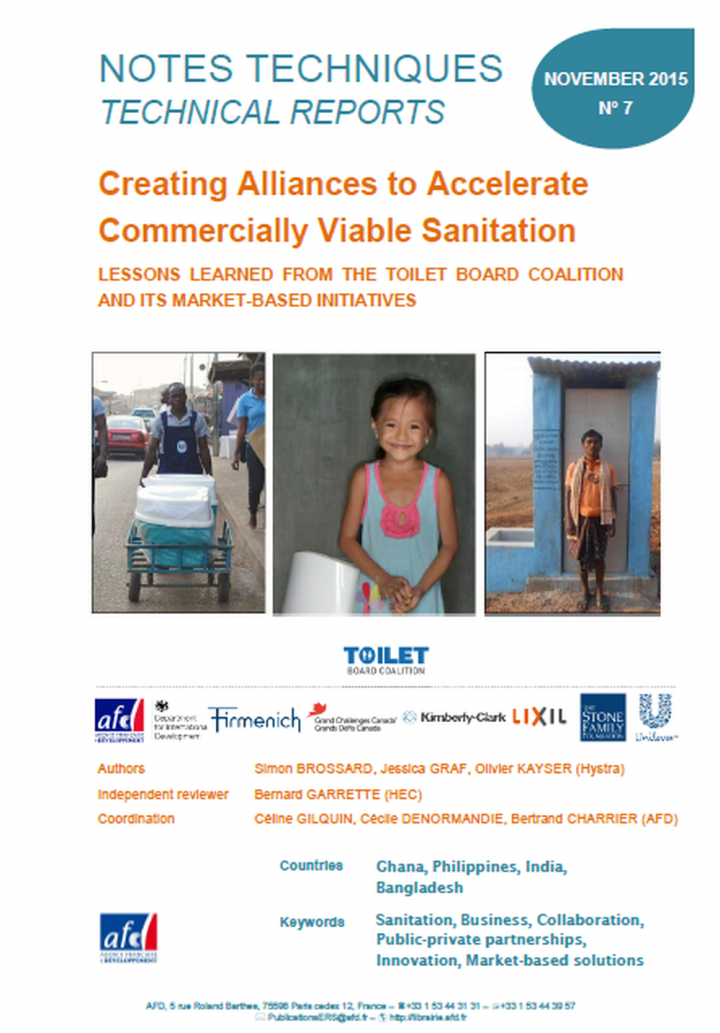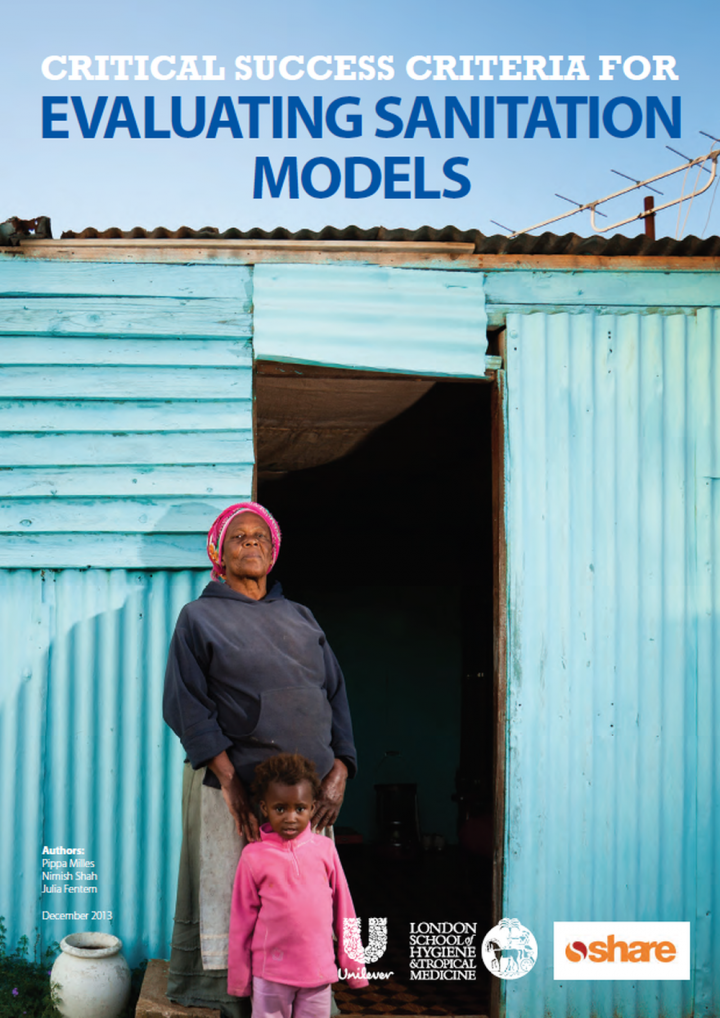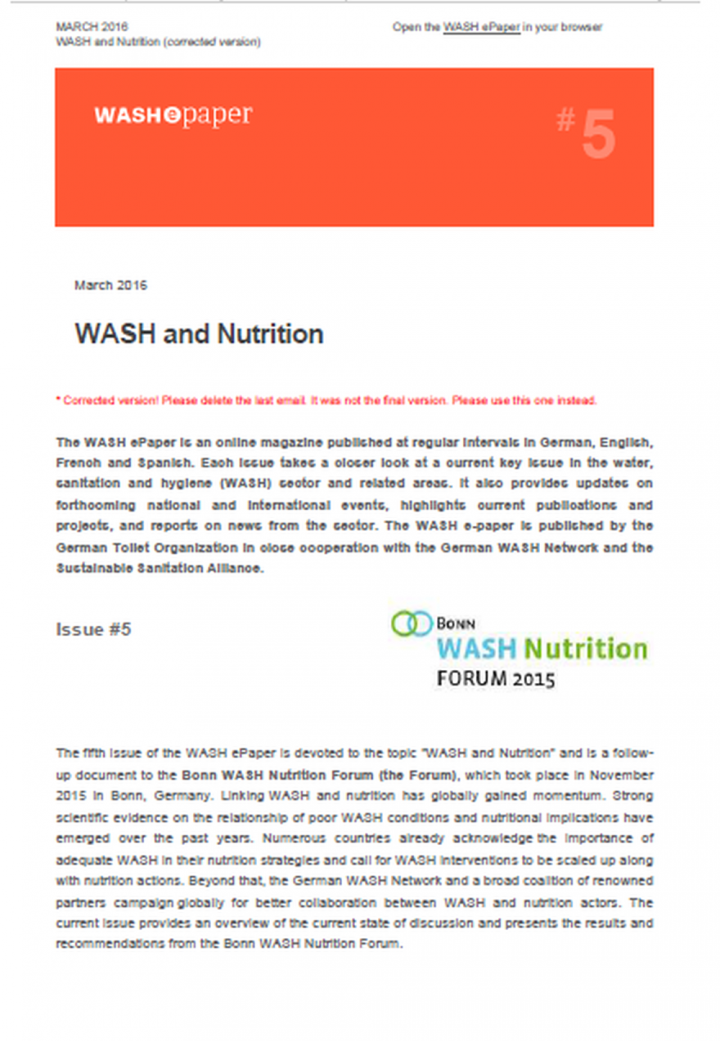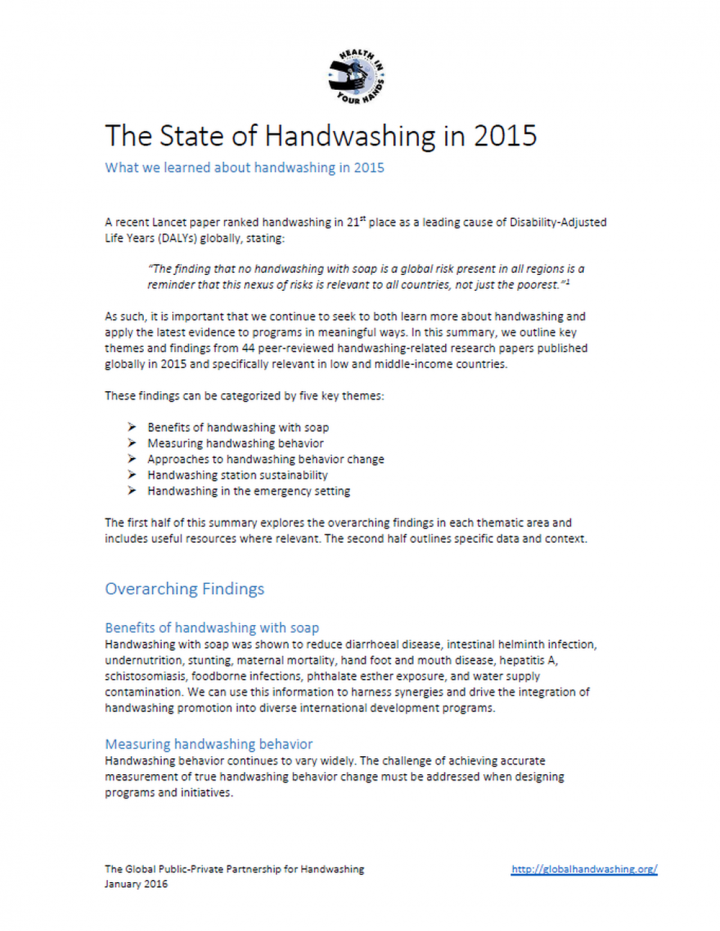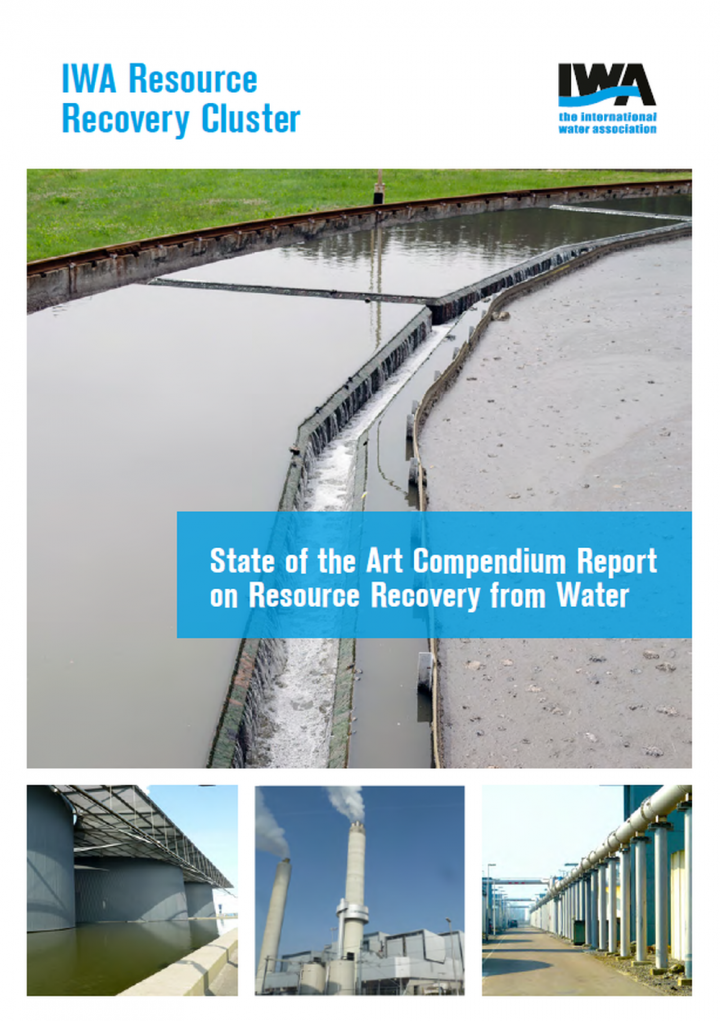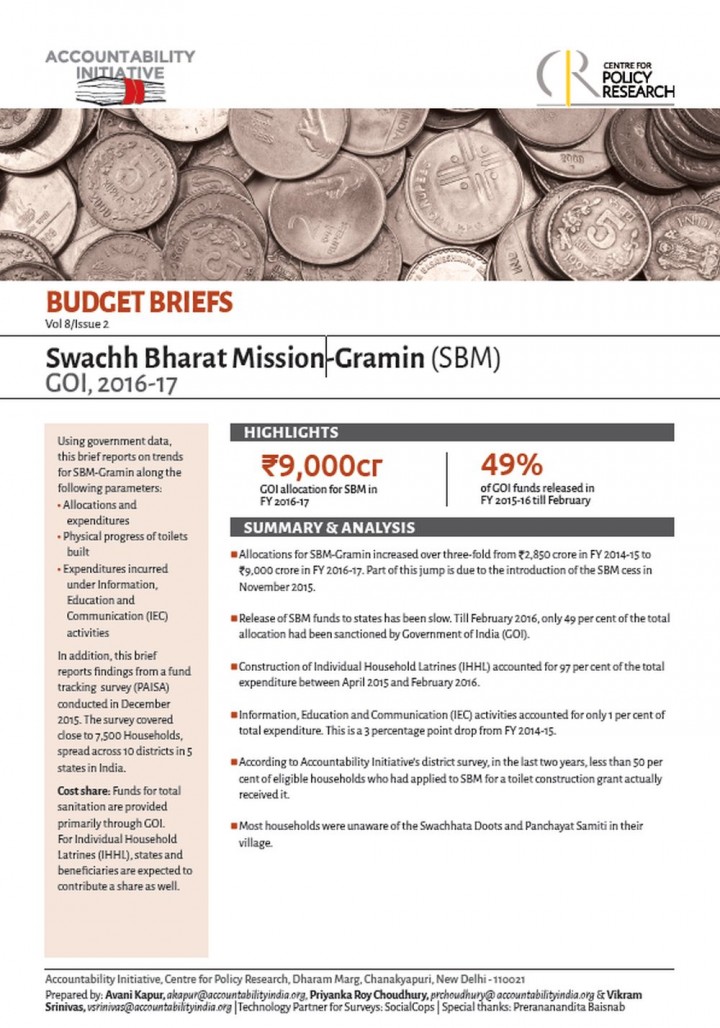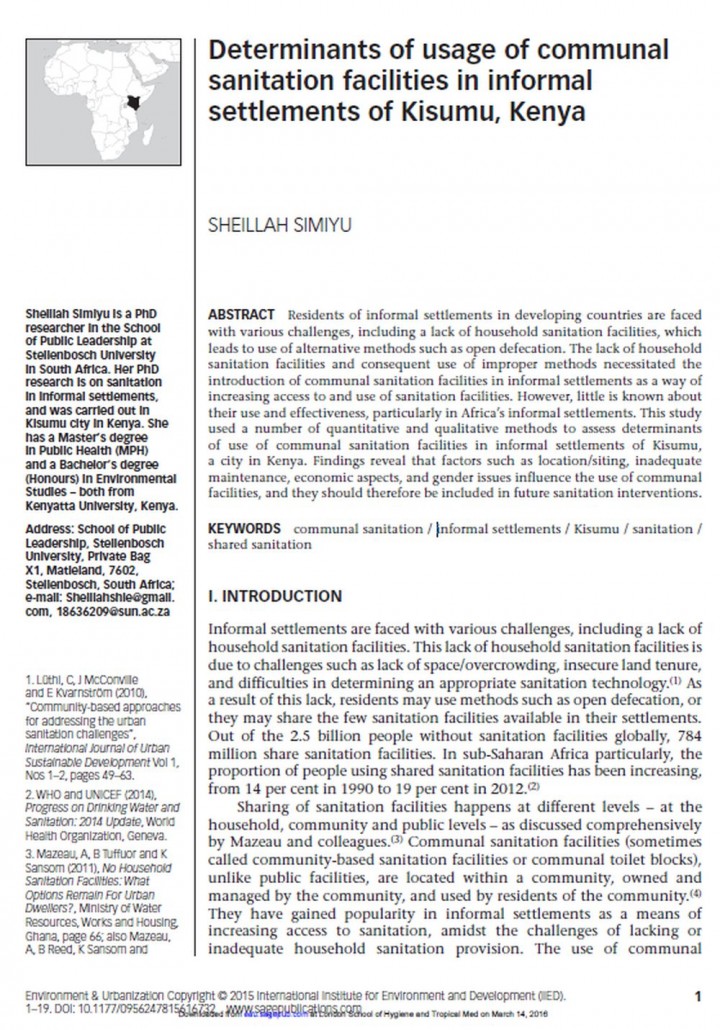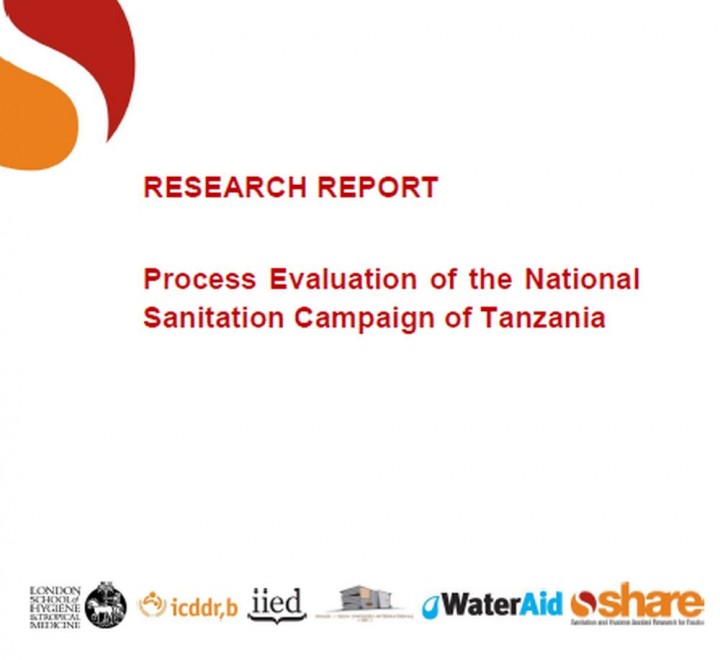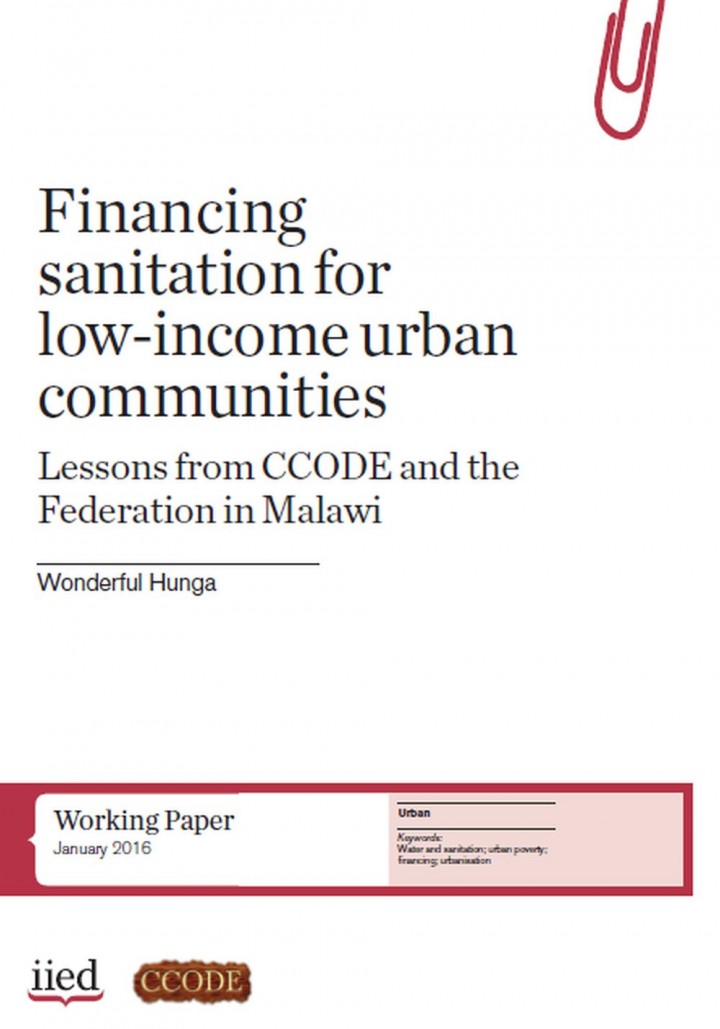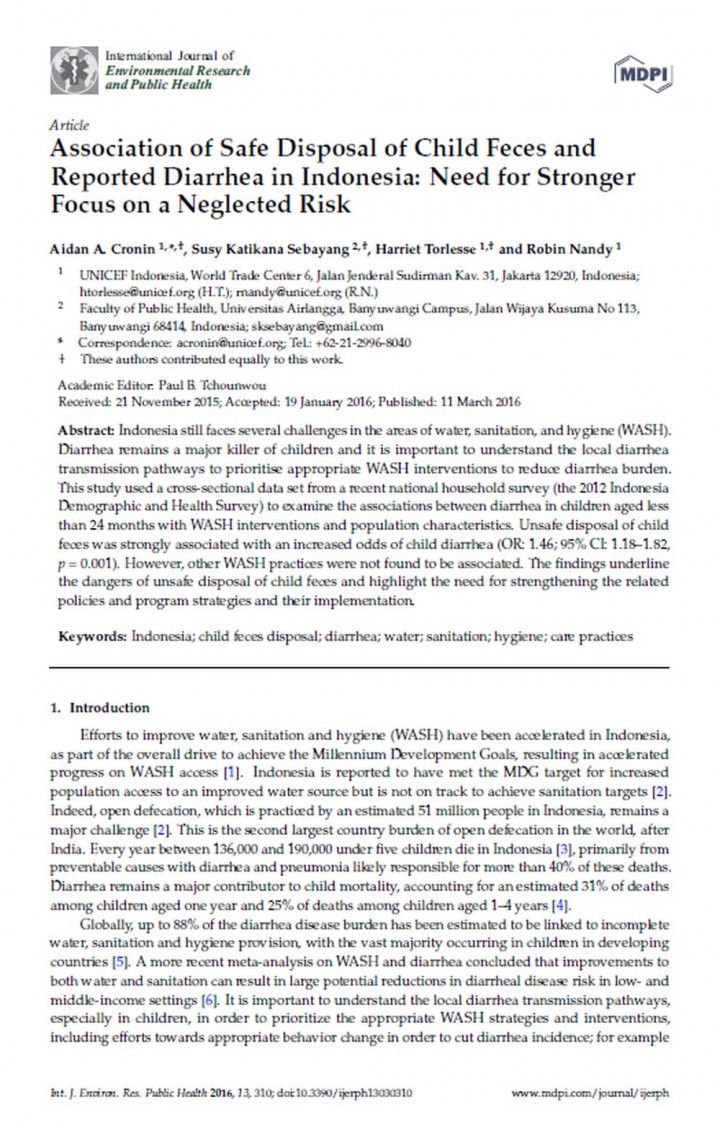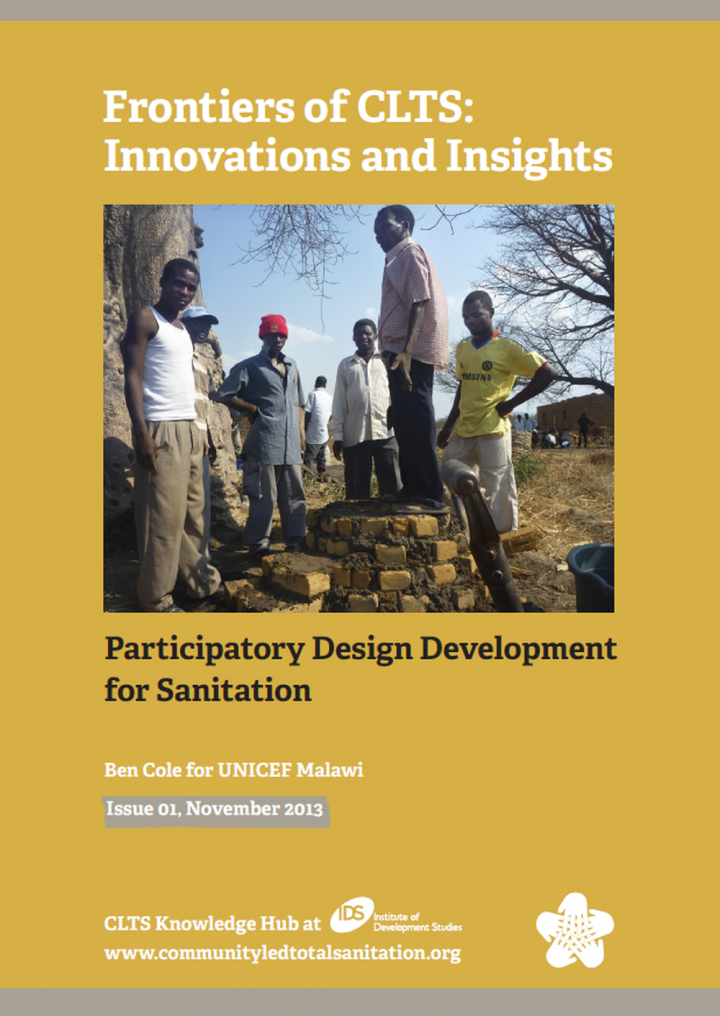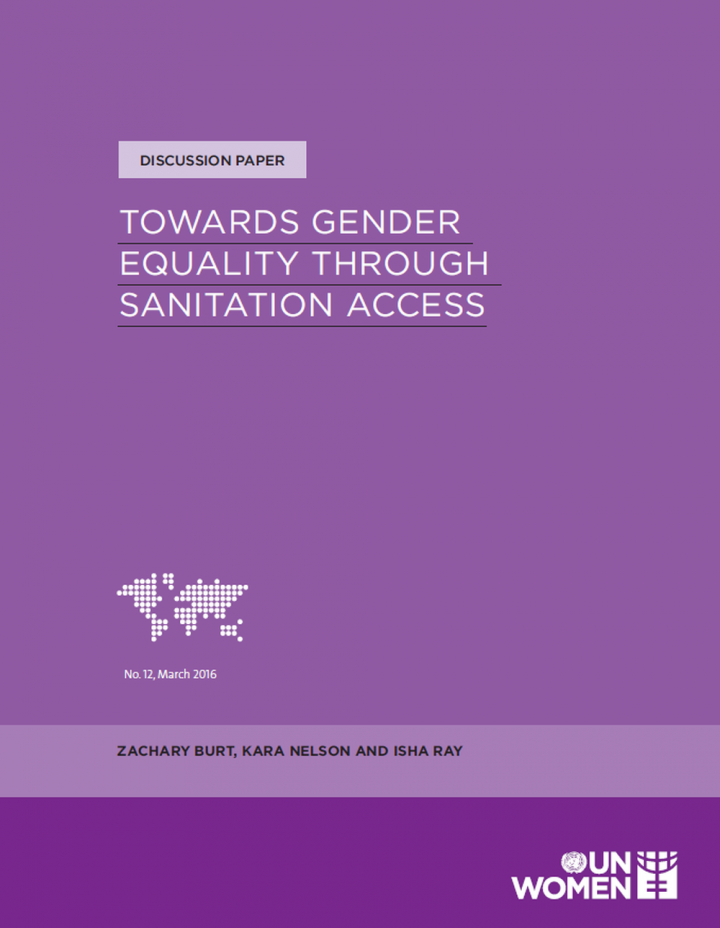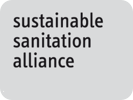Walther, D. (2016) Introducing City Sanitation Plan - SNUSP II Practitioner's Manual
“Introducing City Sanitation Plan: A Practitioners Manual” is a culmination of the long drawn process in introducing the importance of CSP for city development. It aims - to sensitize practitioners (key ULB level officials, decision makers, city engineers etc.) to the importance and significance of the CSP as a planning and guidance tool; to support them in understanding key concepts of the CSP preparation process […]
Dube, R. (2015) Improving lives The road to 100% city sanitation
This impact brochure introduces the reader to the main objectives and interventions of the project and highlights hands-on experiences from the ground. The main focus of this brochure lies on showing the impact of the project SNUSP on people living in cities, institutional processes such as sanitation planning and policy making at national, state and city level. Finally it provides insights on the next steps […]
Various authors (2011) Policy paper on septage management in India
With fast growing economy and urban population, the waste generation is steeply increasing in India. Due to paucity of resources, the local bodies, which are responsible for management of wastes, are not able to provide this service effectively. According to Centre Pollution Control Board (CPCB) study, out of 38254 MLD of sewage generated in India, the treatment facilities are available for 30% (11787MLD). The indiscriminate […]
Various authors (2016) CSE Workshop on Mainstreaming Citywide Sanitation: Opportunities and Challenges for Excreta Management
The Centre for Science and Environment (CSE) organised a two day workshop on “Mainstreaming Citywide Sanitation: Opportunities and Challenges for Excreta Management” from April 4-5, 2016 in New Delhi. The objective of the workshop was to promote active exchange of experiences of national and international opportunities and challenges in excreta management. The workshop was attended by over 150 key sector policy makers, national/state functionaries, professionals, […]
Langergraber, G., Lechner, M., Müllegger, E. (Eds.) (2016) Composting Sustainable Sanitation Practice 26
Besides sanitation, solid waste management plays an important role in improving the hygienic conditions in cities. There are several strong links between sanitation and solid waste management. In sanitation systems without sewers, urine, faecal matter and faecal sludge have to be collected from the single households such as solid waste. Faecal matter as well as sludge from wastewater treatment plants can be treated by composting […]
Cross, X., Buckley, C. (2016) SFD Report - Durban, South Africa
ESCAP, UN-Habitat, AIT (2015) Policy guidance manual on wastewater management with a special emphasis on decentralized wastewater treatment systems
The Policy Guidance Manual on Wastewater Management with a special emphasis on Decentralised Wastewater Treatment Systems (DEWATS) highlights adequate policy and sustainable practices from the South-East Asia (SEA) region and worldwide. The primary objectives of the Policy Guidance Manual on DEWATS for SEA are three-fold: (a) to guide national and local policy-makers and experts of SEA in enabling pro-poor policies, strategies, legal, institutional, social, environmental and […]
Brossard, S., Graf, J., Kayser, O. (2015) Creating alliances to accelerate commercially viable sanitation Technical reports
The past decades have seen a growing appreciation of the role of market-based approaches in driving global development. Many coalitions of public and private players have emerged to promote them. How best to trigger and support these market-based approaches? How to leverage the expertise and resources of diverse members in coalitions? This paper presents insights from the Toilet Board Coalition (TBC), a young alliance that […]
Milles, P., Shah, N., Fentem, J. (2013) Critical success criteria for evaluating sanitation models
Unilever believes that business has a role to play in solving the global sanitation crisis that leaves 2.5 billion people without access to improved sanitation. In 2012, Unilever convened the Toilet Board, a group of likeminded companies, NGOs and research professionals, with expertise in sanitation and a desire to take immediate action to address this issue. The Toilet Board aims to foster commercial approaches to […]
GTO (2016) WASH and Nutrition WASH ePaper, Issue No.5
The WASH ePaper is an online magazine published at regular intervals in German, English, French and Spanish. Each issue takes a closer look at a current key issue in the water, sanitation and hygiene (WASH) sector and related areas. It also provides updates on forthcoming national and international events, highlights current publications and projects, and reports on news from the sector. The WASH e-paper is […]
PPPHW (2016) The state of handwashing in 2015 What we learned about handwashing in 2015
A recent Lancet paper ranked handwashing in 21st place as a leading cause of Disability-Adjusted Life Years (DALYs) globally, stating: “The finding that no handwashing with soap is a global risk present in all regions is a reminder that this nexus of risks is relevant to all countries, not just the poorest.” As such, it is important that we continue to seek to both learn more […]
Neal, D. et al. (2016) Nudging and habit change for open defecation New tactics from behavioral science
In this working paper, we draw on basic scientific findings from psychology, cognitive science, and behavioral economics to propose a framework of 8 System 1 Principles to support the initiation and maintenance of OD behavior change. In doing so, we build from the general framework advanced in the World Bank Group’s (2015) World Development Report: Mind, Society, and Behavior, which emphasized three core insights from […]
Holmgren, K. E. et al. (2015) State of the art compendium report on resource recovery from water
Increasing population growth leads to increased resource (water, food, chemicals and energy) demand. Concomitantly, increasing volumes of ‘used resources’, commonly considered waste, are produced. There is a growing awareness that the resources that could be potentially recovered from these used streams or wastes represent economic value and should not be lost. One of the greatest challenges is pursuing sustainable and economically responsible management of all […]
Kapur, A., Choudhury, P.R., Srinivas, V. (2016) Budget briefs: Swachh Bharat Mission-Gramin (SBM) GOI, 2016-17
Using government data, this brief reports on trends for SBM Gramin along the following parameters: •Allocations and expenditures •Physical progress of toilets built •Expenditures incurred under Information, Education and Communication (IEC) activities In addition, this brief reports findings from a fund tracking survey (PAISA) conducted in December 2015. The survey covered close to 7,500 Households, spread across 10 districts and 5 states in India
Simiyu, S. (2016) Determinants of usage of communal sanitation facilities in informal settlements of Kisumu, Kenya
Residents of informal settlements in developing countries are faced with various challenges, including a lack of household sanitation facilities, which leads to use of alternative methods such as open defecation. The lack of household sanitation facilities and consequent use of improper methods necessitated the introduction of communal sanitation facilities in informal settlements as a way of increasing access to and use of sanitation facilities. However, […]
Various Authors (2016) Process evaluation of the national sanitation campaign of Tanzania
Despite continuous financial efforts to improve the conditions in the country, Tanzania was off track to meet both the MDGs target on water and sanitation and the national MKUKUTA goals. Whilst the country reached a high level of latrine coverage (90%) during the Mtu ni Afya campaign of the 1970s, very little progress has been made since then to move the population up the sanitation […]
Hunga, W. (2016) Financing sanitation for low-income urban communities Lessons from CCODE and the Federation in Malawi
Like many other countries in the Global South, Malawi has failed to meet Millennium Development Goal (MDG) targets to improve access to sanitation. It has been estimated that only 25 percent of the country’s population has gained Access to improved sanitation since 1990 and access to it is a meagre 41 per cent, according to the latest Joint Monitoring Programme (JMP) Report (2015). By utilising […]
Cronin, A. A. et al. (2016) Association of safe disposal of child feces and reported diarrhea in Indonesia Need for stronger focus on a neglected risk
Indonesia still faces several challenges in the areas of water, sanitation, and hygiene (WASH). Diarrhea remains a major killer of children and it is important to understand the local diarrhea transmission pathways to prioritise appropriate WASH interventions to reduce diarrhea burden. This study used a cross-sectional data set from a recent national household survey (the 2012 Indonesia Demographic and Health Survey) to examine the associations […]
Cole, B. (2013) Participatory design development for sanitation Frontiers of CLTS: Innovations and Insights Issue 1
IDS has been working in support of Community-Led Total Sanitation (CLTS) since its beginnings. CLTS has now become an international movement for which IDS is the recognised knowledge hub. The Knowledge Hub is dedicated to understanding the on-the-ground realities of CLTS practice and to learn about, share and promote good practices, ideas and innovations that lead to sustainability and scale. We seek to keep the […]
Burt, Z., Nelson, K., Ray, I. (2016) Towards gender equality through sanitation access Discussion paper
This discussion paper reviews the extensive literature on sanitation to show that inadequate access to this basic service prevents the realization of a range of human rights and of gender equality. We recognize that “dignity” is a highly culture- and gender-specific term; we therefore argue that sanitation for all—sanitation that serves all genders equally—must be designed and planned explicitly for the unique needs of women […]
